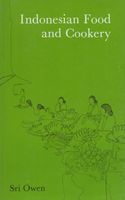Advertisement
Ubi Kayu
By Sri Owen
Published 1980
Manihot utilissima, ‘wood ubi’ (Java, ketela or singkong). This is cassava, or the tapioca plant, which has been grown in Java since sometime in the eighteenth century (‘ketela’ is almost certainly a corruption of ‘Castile’, which suggests that the Spaniards brought cassava to the East, though other local dialect names pin it on the Indians, the Dutch and the British). It must be well boiled before anything else can be done with it, as the raw tubers, especially if they have been out of the ground for more than a day or two, produce poisonous hydrocyanic acid; boiling gets rid of this completely. People in Java dry out the tubers in the sun and grind them to flour. I cannot say that dried cassava is a very popular food in Indonesia, as we associate it with hard times and high prices, but it fills you up and in the 1940s it kept many from starvation. It is not a healthy food to subsist on alone, being mostly starch, and too much of it reduces the body’s resistance to diseases such as beri-beri. I became fond of fresh cassava, however, when the worst of the hard times were over and it suddenly became a cheap luxury again. It can be fermented with ragi, or yeast, to make a soft, sweet, mildly alcoholic food which we call tapé. I love tapé, but I must admit I have not met many Europeans who did.


